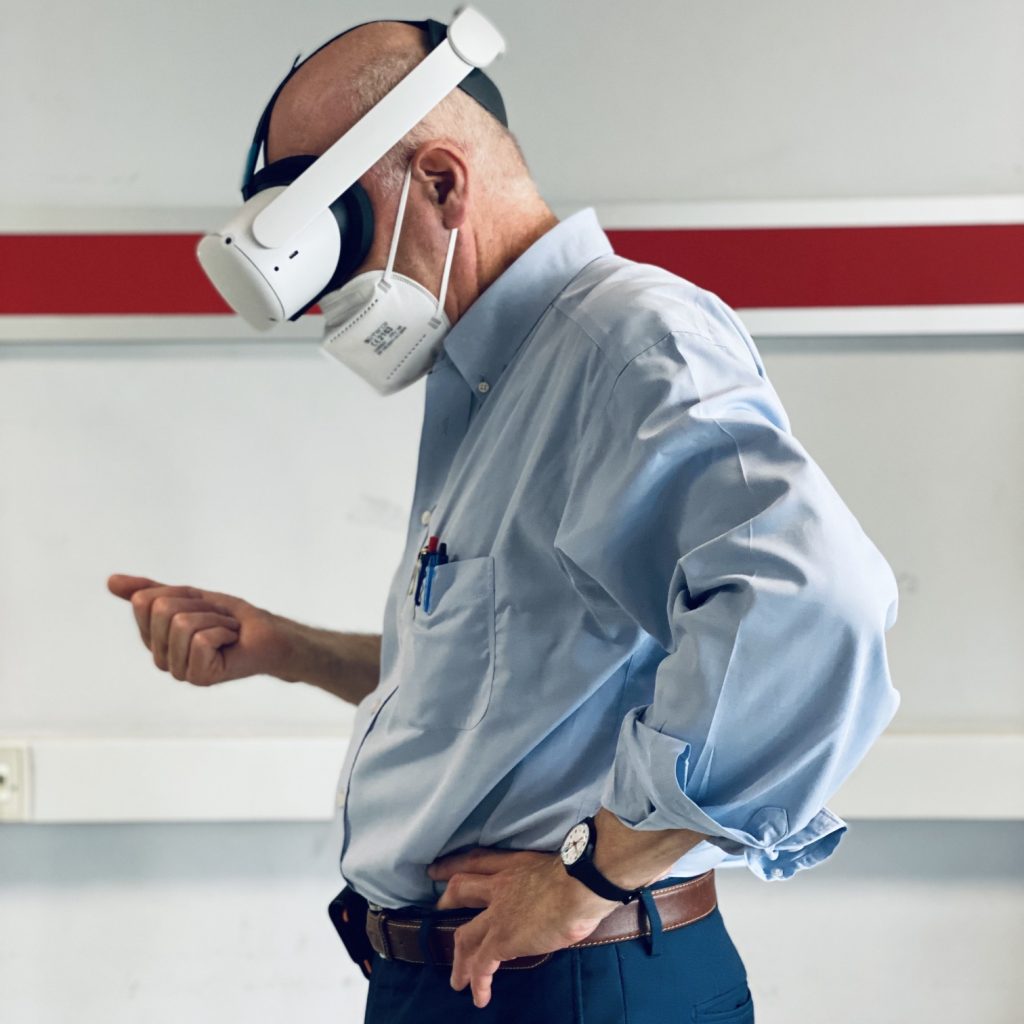Thanks to Maurizio Sabini, we had the chance to show Osaka’70 to an entire class of architecture students from the Politecnico di Milano. Maurizio is a Professor of Architecture at the Hammons School of Architecture at Drury University, but for this term he is a visiting professor at Politecnico di Milano. He decided to use the Osaka’70’s experience to introduce his students to the figure of Maurizio Sacripanti, who is often not mentioned at the University.
With Maurizio, we discussed about how the history of architecture could be told through this immersive mode.
It can’t be done for each studied building, but we could create a library, and enrich it over time with some educationally significant projects (architecture never built or architecture that had been realized but then demolished).
The direct experience of a space is different from studying its drawings. Immersing oneself in the architecture means deeply understanding its compositional and constructive logic.
In addition, this interactive mode allows the student to be an active part of the lesson, just like a real guided tour. We experienced this directly with the students of the Politecnico di Milano who, after the visit, were eager to learn more about the pavilion and the architect Sacripanti.

Here’s what Maurizio Sabini told us after our meeting:
“The VR technology developed by Valentina Temporin and John Volpato of Poplab offers a really advanced experience of a virtual spatial immersion. The technology is user friendly and allows the user to easily navigate through space with a high level of spatial simulation, along with clear and effective virtual mobility options. The test developed on Maurizio Sacripanti’s project of the Italian Pavilion for the World Expo at Osaka (Japan) in 1970 is a powerful demonstration of how Poplab’s VR technology can offer a full spatial comprehension of a highly complex architectural design, such as Sacripanti’s “kinetic architecture.” One can only wonder about what lies ahead, with further research by Poplab, to make VR a key step in the conception, narration and experience of architectural space.”
If you want to know more about what we do or to visit the pavilion write us at: info@poplab-team.org